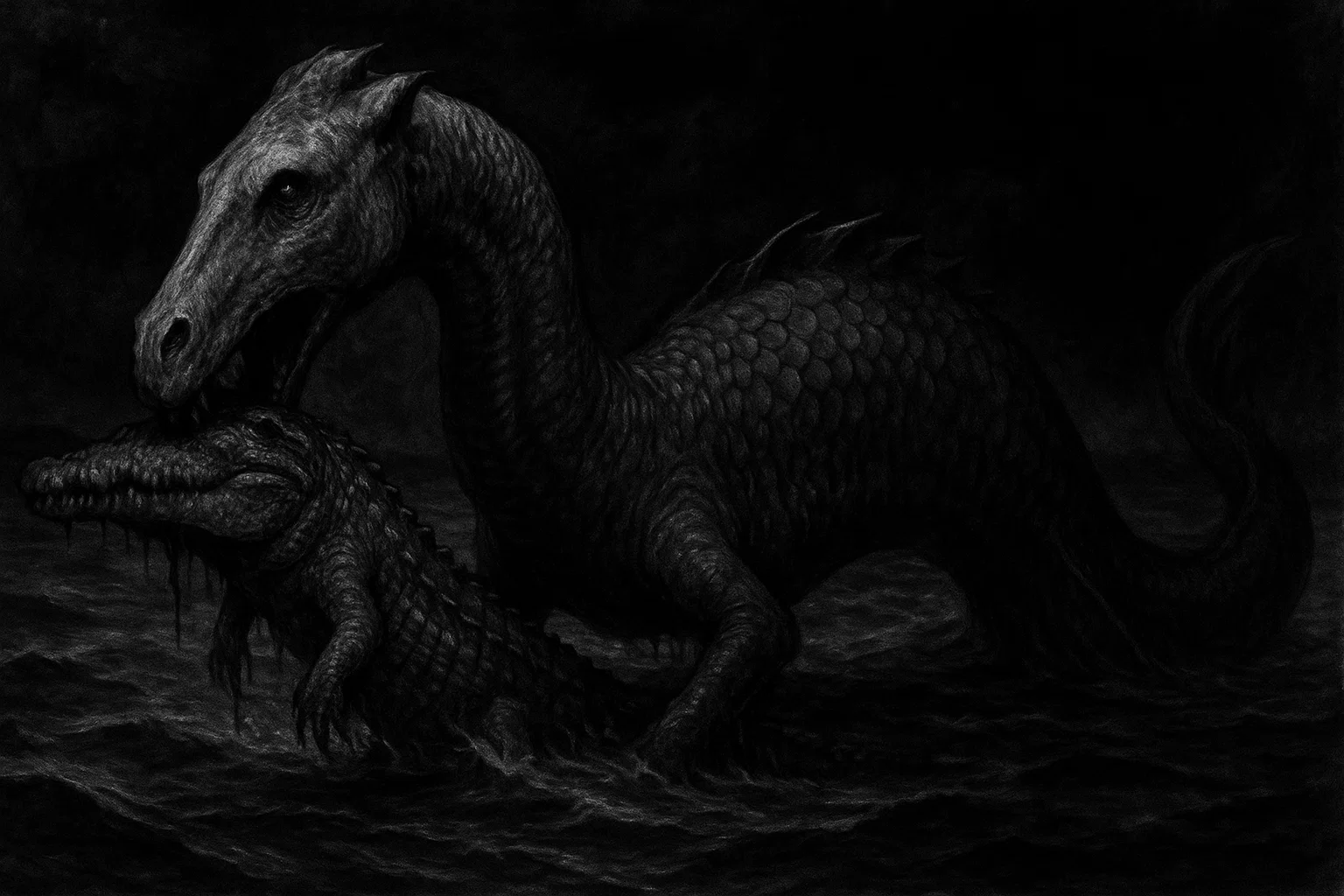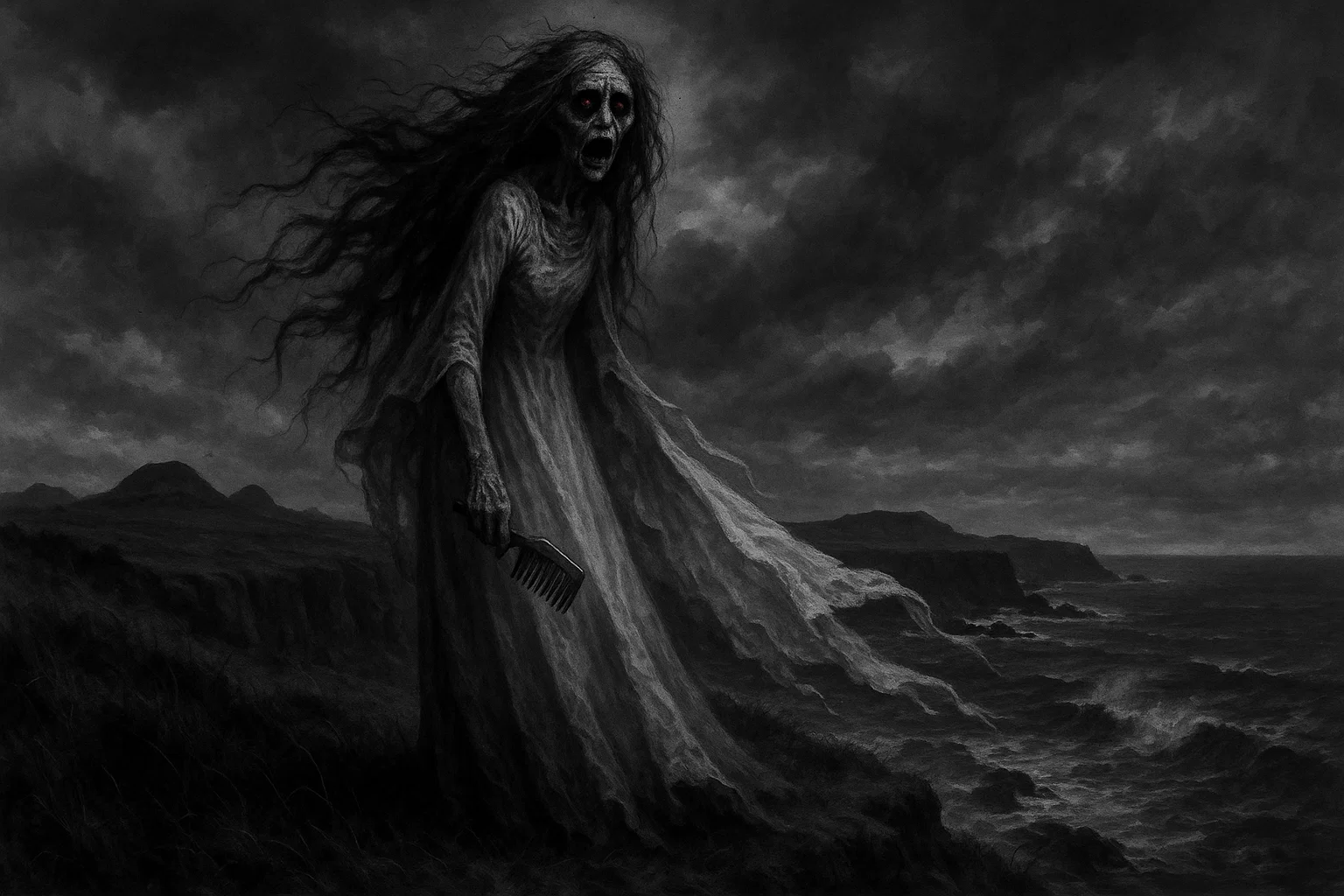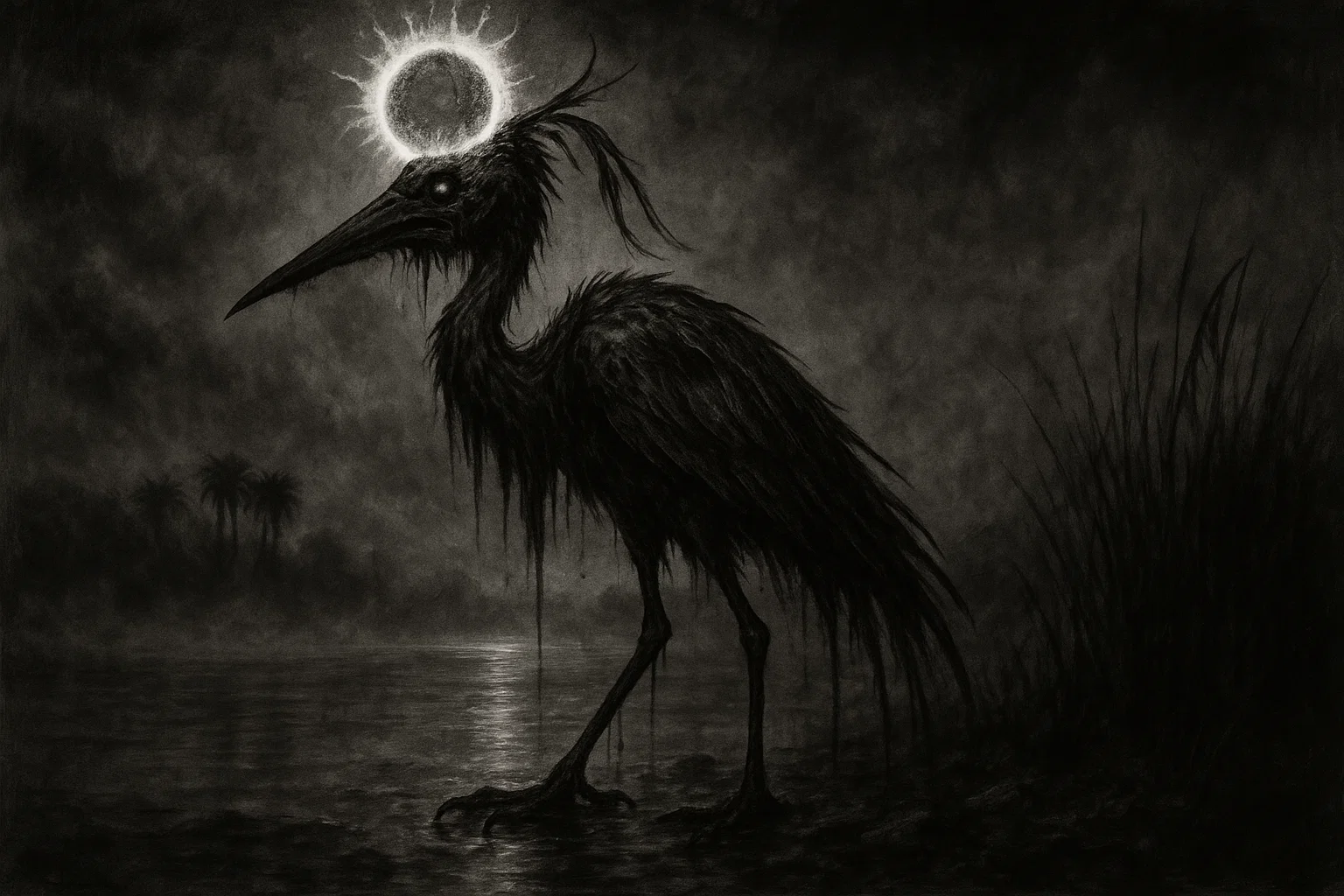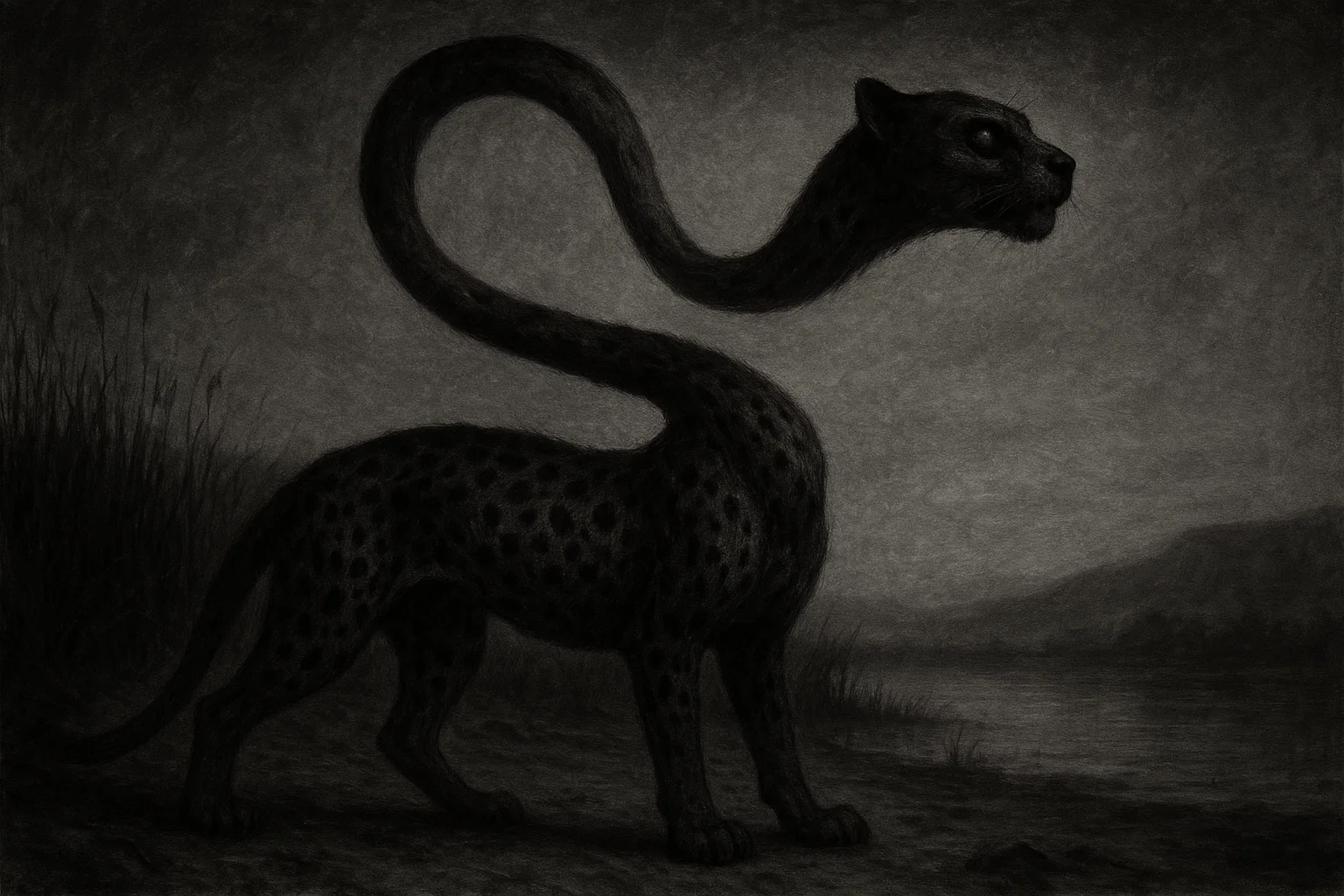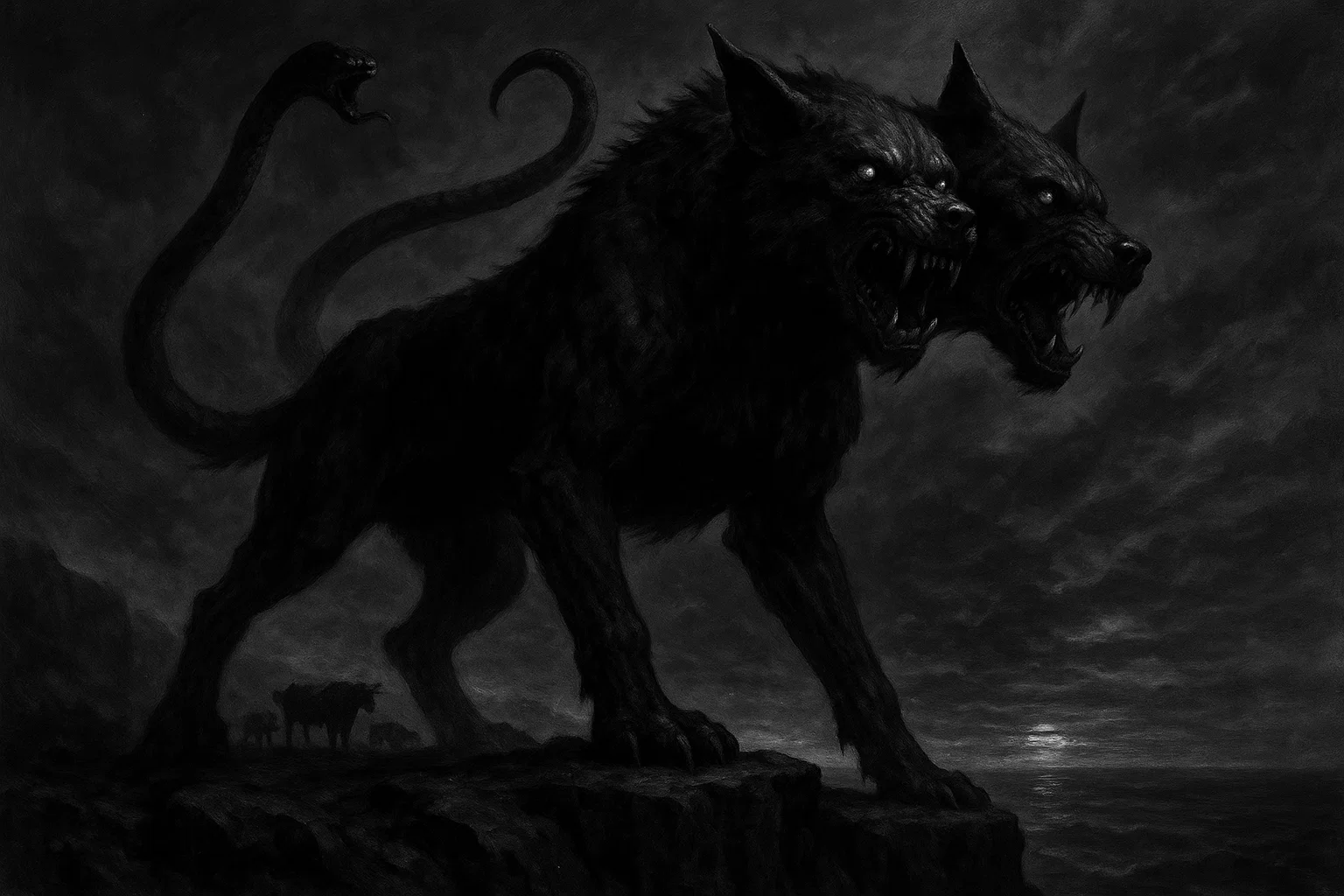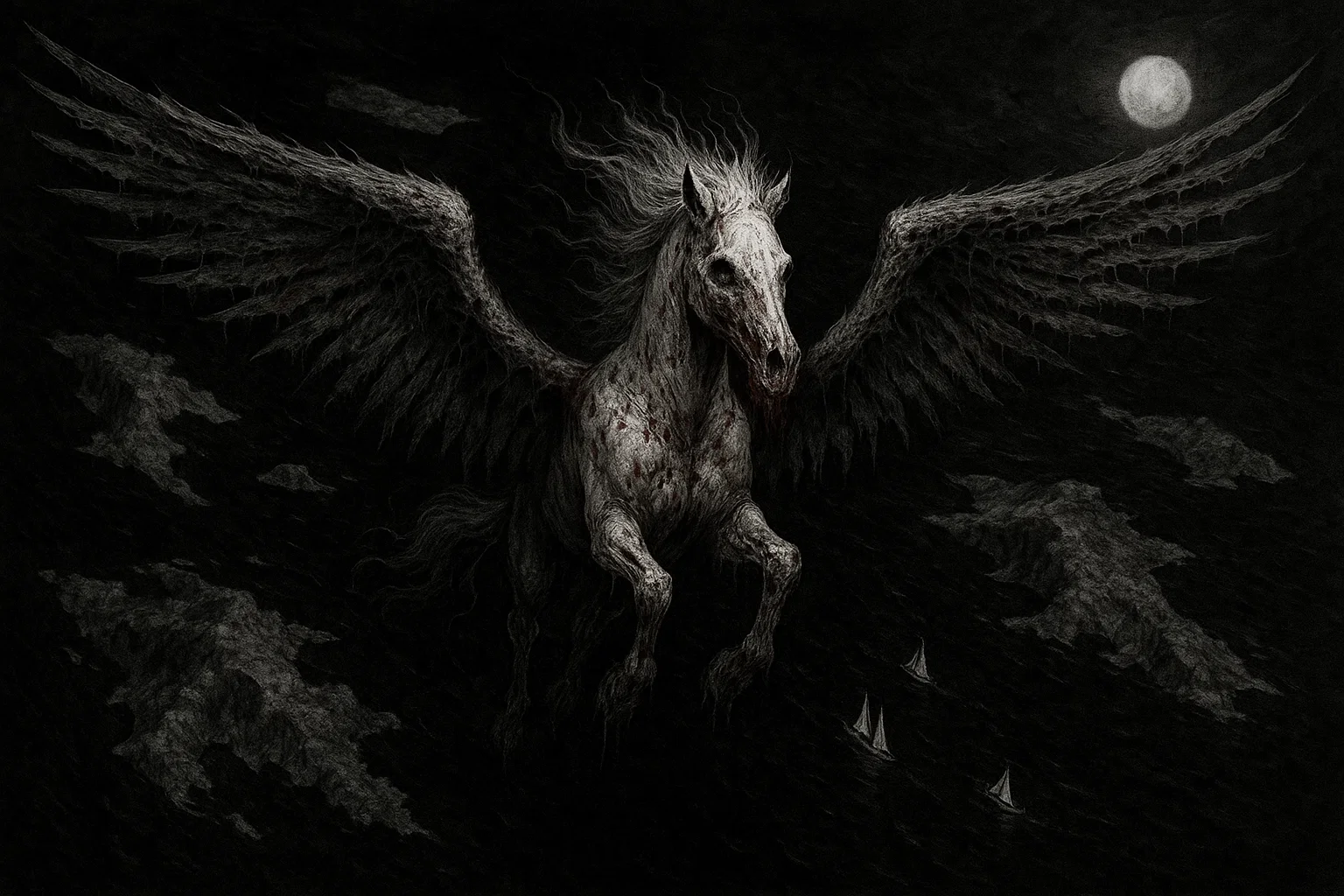Deep in the heart of South Africa’s Eastern Cape, the Mzintlava River hides a chilling secret: the Mamlambo, a mythical creature blending awe and terror.
Known as the “Mother of the River,” this serpentine entity is revered as a deity of wealth and feared as a predator that lures victims to watery graves. In 1997, a series of sightings and unexplained deaths near Mount Ayliff sparked global intrigue, transforming Mamlambo from folklore to a cryptozoological enigma.
Is it a real beast, a misidentified animal, or a cultural symbol born from ancient beliefs? This comprehensive exploration delves into Mamlambo’s origins, appearance, habitat, sightings, evidence, and comparisons with other cryptids to uncover the truth behind this mysterious river monster.
Summary
What Is Mamlambo?
The Mamlambo is a multifaceted figure in South African mythology, deeply embedded in the cultural fabric of the Zulu and Xhosa peoples. Its name, derived from the Xhosa and Zulu words “Mama” (mother) and “Mlambo” (river), translates to “Mother of the River,” reflecting its role as a guardian of aquatic realms.
In traditional lore, Mamlambo is a dual-natured entity, embodying both benevolence and malevolence. For some, it is a deity of prosperity, granting wealth, fertility, or power to those who honor it through rituals, often involving offerings or spiritual pacts.
However, its darker side portrays it as a vengeful creature that drowns victims and, according to legend, consumes their brains, earning the chilling epithet “Brain-Sucker.”
In Zulu mythology, Mamlambo is sometimes depicted as a mermaid-like being, half-human and half-fish, with the power to enchant or manipulate. Xhosa tales, however, describe it as a giant river snake or a serpentine creature with supernatural abilities, sometimes summoned by sangomas (traditional healers) for protection or retribution.
Its duality mirrors other African water spirits, such as the Nyami Nyami of the Zambezi River, but Mamlambo’s association with both fortune and destruction sets it apart.
The modern perception of Mamlambo as a cryptid emerged in 1997, when reports of a monstrous creature in the Mzintlava River near Mount Ayliff made headlines.
Villagers described a massive, glowing reptile linked to a series of mysterious deaths, sparking debates about whether Mamlambo was a living creature, a spiritual manifestation, or a misinterpretation of natural phenomena.
Its legend blends ancient beliefs with contemporary mystery, making it a compelling subject for cryptozoologists and cultural historians alike.
You May Also Like: The Portrait of Doña Isabel de Porcel Curse: Real or Not?
What Does Mamlambo Look Like?
Mamlambo’s appearance varies across accounts, reflecting the fluidity of oral traditions and the influence of fear-driven sightings.
The most prominent description from the 1997 sightings portrays Mamlambo as a colossal creature, approximately 20 meters (65 feet) long, with a horse-like head, a serpentine neck, short stubby legs, and a fish-like lower body adorned with scales.
Witnesses often emphasize its bioluminescent glow, describing a greenish shimmer that illuminates the river at night, enhancing its eerie presence. Some accounts note two glowing green eyes that mesmerize victims, adding a hypnotic quality to its fearsome reputation.
Other descriptions suggest a smaller creature, around 6-7 feet in length, with a crocodilian torso, four short legs, a long whip-like tail, and a head resembling either a horse or a snake.
An elder named Matshunga described it as a “big snake” with a “snake-like neck” that “shines with a green light,” reinforcing the bioluminescence theme. Some reports mention sharp teeth or a forked tongue, aligning with reptilian traits, while others suggest a smoother, eel-like body suited for swift movement through water.
These variations may stem from cultural differences, environmental factors, or the psychological impact of encountering an unknown entity in murky waters.
The consistent features—serpentine form, aquatic nature, horse-like head, and glowing body—suggest a shared mythological archetype, possibly inspired by real animals like crocodiles or exaggerated by the river’s mysterious ambiance.
Habitat
Mamlambo is primarily associated with the Mzintlava River (also spelled Umzimhlava) near Mount Ayliff in South Africa’s Eastern Cape province, a rural region approximately 110 miles southeast of Durban.
This river, winding through hilly terrain and lush vegetation, is characterized by murky, slow-moving waters that obscure visibility, creating an ideal environment for a cryptic creature to remain hidden.
The riverbanks are lined with dense reeds, grasses, and indigenous trees like acacias, providing ample cover for a large predator. The area’s subtropical climate supports diverse fauna, including Nile crocodiles, water snakes, and various fish species, which may contribute to misidentifications.
The Mzintlava River is a lifeline for local communities, used for fishing, bathing, and spiritual rituals, which ties directly to Mamlambo’s role as a river deity.
Villagers believe the creature is drawn to lightning storms, a phenomenon common in the region during the rainy season (November to March), which may explain why sightings peak in 1997 coincided with stormy weather. The river’s depth and occasional flooding create hazardous conditions, potentially amplifying fears of a lurking monster.
The Eastern Cape, particularly around Mount Ayliff and nearby Lubaleko village, has a history of paranormal and unexplained phenomena. Local folklore includes tales of tokoloshe, mischievous spirits that haunt homes, and impundulu, a lightning bird linked to witchcraft.
These stories suggest a cultural predisposition to supernatural explanations, which may frame Mamlambo sightings. The Mzintlava River is also tied to other local legends, such as tales of water spirits that protect sacred pools or punish trespassers, reinforcing the idea that the area is a hotspot for mystical beliefs.
Historically, the region was a battleground during the Xhosa Wars (1779–1879), and some elders claim that restless spirits or cursed waters contribute to the river’s eerie reputation, though no specific cryptids beyond Mamlambo are documented here.
The isolation of Mount Ayliff, with its sparse population and limited infrastructure, fosters an environment where oral traditions thrive, preserving Mamlambo’s legend.
You May Also Like: The Conjured Chest: 17 Victims, One Sinister Curse
Mamlambo Sightings
The Mamlambo legend gained prominence through a series of alleged sightings between January and April 1997 in the Mzintlava River near Mount Ayliff, Eastern Cape.
These reports, accompanied by 7 to 9 mysterious deaths, captured national attention and fueled speculation about a real creature. Villagers described a 20-meter-long serpent with a horse-like head, fish-like tail, and a glowing green body, often seen during lightning storms.
The deaths, marked by severe facial and neck mutilations, were attributed by locals to Mamlambo’s brain-sucking behavior, though police dismissed these claims, citing drowning and post-mortem predation by crabs.
| Date | Location | Witness | Description | Event |
|---|---|---|---|---|
| Early January 1997 | Mzintlava River, near Lubaleko | Sipho Ndlovu (fisherman) | Huge snake, horse-like head, green glow, glowing eyes | First reported sighting, linked to a drowning |
| February 12, 1997 | Mzintlava River, shallow bend | Nomsa Mkhize and others | Long, scaly creature, serpentine neck, short legs, hissing sound | Sighting followed by discovery of mutilated body |
| March 3, 1997 | Mzintlava River, near Mount Ayliff | Thabo Dlamini (teenager) | Glowing horse-headed creature during lightning storm | Narrow escape, reported to police |
| April 29, 1997 | Bisho (legislative report) | Ezra Sigwela (minister) | Half-fish, half-horse monster, linked to 7 deaths | Public acknowledgment, call for conservation officers |
| Late April 1997 | Mzintlava River, bridge | Matshunga (elder) | 6-7 ft creature, snake-like head, crocodilian body, green glow | Sighting with another mutilated body discovered |
January 1997: The First Encounter
In early January 1997, a fisherman named Sipho Ndlovu reported seeing a “huge snake” while fishing near the Mzintlava River’s eastern bank, close to Lubaleko village.
Around dusk, he noticed a green glow beneath the water, followed by a horse-like head emerging briefly before submerging. Sipho, a 42-year-old father of three, fled in panic, claiming the creature’s glowing eyes seemed to “stare into his soul.”
His account, shared with local elders, marked the beginning of the 1997 panic, as villagers linked the sighting to a recent drowning.
February 1997: The Lubaleko Incident
On February 12, 1997, a group of women washing clothes near a shallow bend of the Mzintlava River reported a sighting. Nomsa Mkhize, a 35-year-old homemaker, described a long, scaly creature with a serpentine neck and short legs moving swiftly through the water.
The group fled when the creature emitted a hiss-like sound, and Nomsa later found a mutilated body of an unidentified man nearby, with wounds on his face and neck.
This incident, reported to local authorities, heightened fears of Mamlambo’s presence.
You May Also Like: The Statue | Horror Story
March 1997: The Nighttime Attack
On March 3, 1997, a teenage boy, Thabo Dlamini, claimed to have narrowly escaped Mamlambo while swimming near Mount Ayliff. Around 8 p.m., during a lightning storm, Thabo saw a glowing shape underwater, followed by a horse-headed creature lunging toward him.
He escaped to the riverbank, where he and his friends reported the incident to the police. Though no injuries occurred, the sighting reinforced the connection between Mamlambo and stormy weather, as locals believed the creature was summoned by lightning.
April 1997: The Bisho Acknowledgment
On April 29, 1997, during a legislative meeting in Bisho, Eastern Cape, Agriculture Minister Ezra Sigwela publicly addressed the Mamlambo crisis. He described a “half-fish, half-horse monster” responsible for at least seven deaths, based on reports from villagers and local journalist Andile Nomabhunga.
Sigwela proposed deploying armed conservation officers to hunt the creature, reflecting the severity of public concern. This event, covered by national newspapers, marked the peak of Mamlambo’s notoriety, though no hunt was ultimately conducted.
April 1997: The Final Sighting
In late April 1997, an elder named Matshunga reported seeing Mamlambo while crossing a bridge over the Mzintlava River. He described a 6-7-foot creature with a snake-like head, crocodilian body, and a green glow that illuminated the water.
Matshunga, a respected community figure, insisted the creature was no myth, claiming it “moved like a spirit” before vanishing.
This sighting, one of the last in the 1997 wave, coincided with the discovery of another mutilated body, further fueling local panic.
Evidence, Investigations, and Theories
No tangible evidence, such as photographs, videos, footprints, or biological remains, has been recovered to substantiate Mamlambo’s existence. The primary evidence consists of eyewitness testimonies from 1997 and the condition of 7-9 bodies found with severe facial and neck mutilations.
Local police, led by Inspector M.P. Nethanani, investigated the deaths and concluded they resulted from drowning, with injuries caused by post-mortem predation by crabs and other scavengers.
This explanation, however, failed to quell local belief in Mamlambo, as villagers insisted the mutilations matched the creature’s reputed brain-sucking behavior.
An expedition by the SyFy show Destination Truth, aired in the early 2000s, explored the Mzintlava River but found no evidence of a large creature.
The team noted the river’s murky conditions and strong currents, which could obscure visibility and contribute to drownings. Despite the lack of findings, the expedition highlighted the cultural weight of the Mamlambo legend, noting its role in explaining unexplained tragedies.
Several theories attempt to explain Mamlambo’s nature:
Misidentification of Known Animals
The Mzintlava River hosts Nile crocodiles, which can grow to 5 meters and are known for attacking humans. Their long snouts and powerful bodies could be mistaken for a serpentine creature, especially in low-light conditions or during storms.
The green glow might result from bioluminescent algae or reflections of moonlight on wet scales. However, crocodiles lack horse-like heads or glowing eyes, and their behavior doesn’t align with the brain-sucking narrative, making this theory plausible but incomplete.
You May Also Like: Orobas: The Demon Who Corrupts With Truth, Not Lies
Extinct Species Hypothesis
Cryptozoologists speculate that Mamlambo could be a surviving mosasaur or plesiosaur, marine reptiles with long necks and serpentine bodies. These creatures, extinct for 66 million years, resemble Mamlambo’s described form.
However, the absence of fossil evidence or living specimens in modern times renders this theory unlikely. The river’s shallow depth also makes it an improbable habitat for such large creatures, weakening this hypothesis.
Cultural Phenomenon
Mamlambo may be a cultural archetype, reflecting Zulu and Xhosa beliefs about water spirits. Rivers are seen as spiritual gateways, and Mamlambo’s legend could explain drownings, floods, or other tragedies.
The 1997 sightings coincided with a rainy season, which may have amplified fears of a supernatural force. This theory fits the lack of physical evidence and the creature’s dual role as a deity, but it doesn’t account for consistent physical descriptions across witnesses.
Hoax or Exaggeration
The possibility of a hoax or exaggerated reports exists, particularly given the media frenzy in 1997.
However, the involvement of credible figures like Ezra Sigwela and Andile Nomabhunga, combined with the consistency of accounts, suggests genuine belief rather than fabrication. The lack of modern sightings since 1997 may indicate a temporary panic fueled by local tragedies.
You May Also Like: The Adjule: Is the Sahara Hiding a Secret Predator?
Comparison with Other Similar Cryptids
Mamlambo shares traits with other aquatic cryptids, particularly those tied to rivers and lakes:
| Cryptid | Location | Habitat | Sightings Frequency |
|---|---|---|---|
| Loch Ness Monster | Loch Ness, Scotland | Freshwater loch | Numerous since 1930s |
| Champ | Lake Champlain, USA/Canada | Lake | Many, 19th-20th century |
| Mokele-Mbembe | Congo River basin | Rivers, swamps | Sporadic, local reports |
| Ogopogo | Okanagan Lake, Canada | Lake | Many, 20th century |
| Bunyip | Australia (various) | Lakes, rivers, swamps | Folklore, some modern |
| Altamaha-ha | Altamaha River, USA | River | Few, 19th-20th century |
| Chesapeake Bay Monster | Chesapeake Bay, USA | Bay | Rare, historical |
| Dobhar-chú | Ireland (Glenade Lough) | Lakes, rivers | Few, 17th century |
| Each-Uisge | Scotland (Highlands) | Lochs, rivers | Folklore |
| Kelpie | Scotland (Perthshire) | Rivers, lochs | Folklore |
| Lusca | Bahamas (Blue Holes) | Deep blue holes | Reports from divers |
Mamlambo’s horse-like head, bioluminescent glow, and brain-sucking behavior distinguish it from other cryptids, though its serpentine form aligns with creatures like the Loch Ness Monster and Altamaha-ha. Its cultural role as a deity of prosperity and destruction, tied to specific Zulu and Xhosa beliefs, sets it apart from purely zoological cryptids.
Is Mamlambo Real?
The reality of Mamlambo remains elusive. The absence of physical evidence, coupled with official explanations attributing the 1997 deaths to drowning and crab predation, suggests that Mamlambo is likely a mythological construct rather than a living creature.
The consistent descriptions of a glowing, horse-headed serpent, however, and the cultural significance in Zulu and Xhosa communities indicate that the legend may stem from real experiences, possibly misinterpretations of Nile crocodiles, water snakes, or environmental phenomena like bioluminescent algae.
The involvement of respected figures like Ezra Sigwela and Andile Nomabhunga, along with the emotional weight of the 1997 tragedies, underscores the sincerity of local belief.
Yet, the lack of modern sightings since 1997 and the failure of investigations to uncover evidence lean toward a cultural explanation. Mamlambo likely serves as a narrative to explain the dangers of the Mzintlava River, reflecting deep-seated reverence for water as a source of life and peril.
In conclusion, while Mamlambo’s existence as a physical creature is improbable, its legend endures as a powerful symbol of South African folklore.
Whether a product of fear, misidentification, or spiritual belief, Mamlambo continues to captivate, bridging ancient traditions with modern mystery.

